Gym Weight

What sports equipment do I need for a complete home gym setup ?
Setting up a home gym requires careful consideration of various types of sports equipment to ensure a comprehensive workout routine. Here's a summary of the key components: 1. **Cardiovascular Equipment**: Includes treadmills, ellipticals, stationary bikes, and rowing machines for endurance and cardio training. 2. **Strength Training Equipment**: Dumbbells, weight plates, barbells, kettlebells, and resistance bands are essential for building muscle mass and overall strength. 3. **Bodyweight Training**: Pull-up bars, parallette bars, and wall-mounted rings facilitate calisthenics exercises using one's body weight as resistance. 4. **Stretching and Recovery**: Foam rollers and yoga mats aid in muscle recovery, flexibility improvement, and floor exercises. 5. **Additional Items**: An exercise bench, jump rope, and a timer or app can complement your workouts with versatility and intensity tracking. Space availability and budget should guide your choices, allowing you to start with basics and expand gradually. With the right selection of equipment, you can create a well-rounded home gym that supports all aspects of fitness and wellness.

How long should my gym sessions be to maximize results ?
Maximizing Gym Sessions for Optimal Results: The duration of your gym sessions can significantly impact your results. To maximize your outcomes, consider factors such as your goals, fitness level, and schedule. Recommended durations vary based on goals: muscle building requires 60-90 minutes, weight loss benefits from 30-45 minutes of HIIT or circuit training, and cardiovascular health improves with 30-60 minutes of moderate-intensity workouts. Intensity matters, with shorter high-intensity workouts being more effective for fat loss and longer moderate-intensity sessions building endurance. Listen to your body and adjust accordingly, allowing for adequate rest and recovery days to prevent injury and promote muscle growth.

How can I prevent injuries while lifting weights at the gym ?
Lifting weights is a great way to build strength and muscle, but it's important to do so safely to prevent injuries. Here are some tips on how to avoid getting hurt while lifting weights at the gym: - Warm up before you lift with stretching and light cardio. - Use proper form and technique, focusing on body alignment and avoiding momentum or jerky movements. - Start with lighter weights until you have perfected your form for each exercise. - Choose the right equipment, wearing appropriate clothing and shoes, and using quality weightlifting gear if needed. - Listen to your body, paying attention to pain and taking breaks and rest days to avoid fatigue and injury. - Get professional guidance from a trainer, especially if you're new to weightlifting or looking to fine-tune your techniques.

Does lifting weights help with weight loss ?
Weight loss is a common goal for many people, and weightlifting is one of the most popular methods. However, does lifting weights help with weight loss? This article explores the benefits and drawbacks of weightlifting as a means of weight loss. One of the main benefits of weightlifting is muscle growth, which can lead to an increase in metabolism and help with weight loss. In addition, weightlifting can also help with fat burning and improved cardiovascular health. However, there are also some potential drawbacks to weightlifting, including high initial costs, potential injuries, and a significant time commitment. If you are interested in trying weightlifting as a way to lose weight, make sure you do your research and find a program that fits your needs and lifestyle.
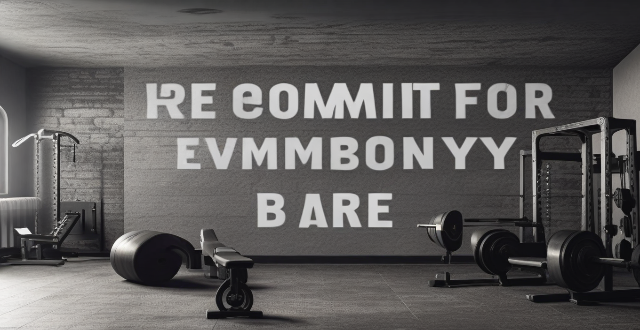
Can you recommend any budget-friendly gym equipment ?
The text offers recommendations for budget-friendly gym equipment, including multi-functional fitness equipment like adjustable dumbbells, resistance bands, and a jump rope; bodyweight training essentials such as a pull-up bar, push-up stands, and an ab wheel; and additional accessories like a gym mat, foam roller, and kettlebell. These affordable items can help achieve fitness goals without the need for expensive gear or a gym membership.
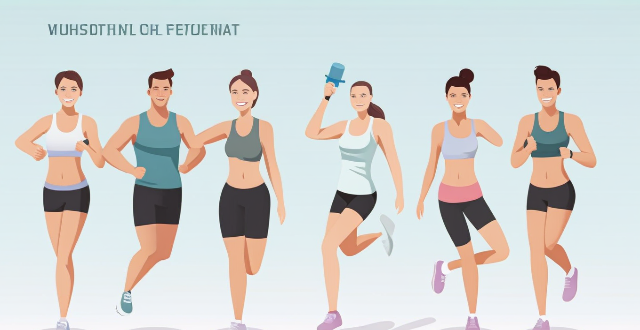
What are the best exercises for weight loss ?
Losing weight requires a combination of a healthy diet and regular exercise. The best exercises for weight loss include cardiovascular exercises like running, cycling, swimming, and jumping rope; strength training exercises like squats, lunges, push-ups, and planks; and high-intensity interval training (HIIT) workouts like Tabata, burpees, and mountain climbers. By incorporating these exercises into your routine, you can burn calories, build muscle, and improve your overall fitness level.
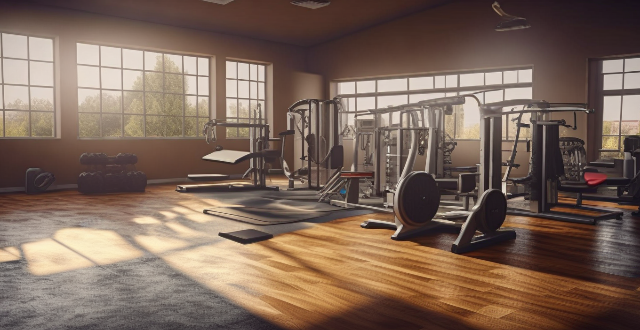
What are the best exercises for building muscle at the gym ?
The article discusses the best exercises for building muscle at the gym, including free weights, machines, and bodyweight exercises. Free weight exercises like squats, deadlifts, and bench press target multiple major muscle groups for overall strength and muscle growth. Machine exercises such as leg press, lat pulldown, and seated row allow for isolation of specific muscles while still allowing heavy lifting. Bodyweight exercises including push-ups, pull-ups, and squat jumps require no equipment and can be done anywhere for convenient muscle building.
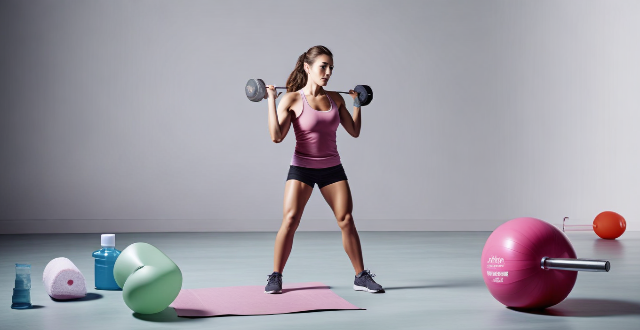
What are some tips for staying motivated during a gym workout ?
Staying motivated during a gym workout can be challenging, but crucial for maintaining a consistent exercise routine. Tips include setting clear goals, creating an energetic playlist, finding a workout buddy, mixing up your routine, tracking progress, rewarding yourself, visualizing success, embracing challenges, getting adequate rest, and focusing on how exercise makes you feel. By implementing these strategies, you can make the most out of your gym workouts and stay consistent in your fitness journey.

Is it necessary for employers to provide fitness facilities or subsidize gym memberships ?
As the importance of physical health and wellness becomes increasingly recognized, many employees are looking for ways to maintain an active lifestyle. One option that has gained traction in recent years is for employers to provide fitness facilities or subsidize gym memberships as part of their employee benefits package. Providing fitness facilities or subsidizing gym memberships can help employees stay healthy and energized, which can lead to increased productivity at work. Studies have shown that regular exercise can reduce fatigue, improve mood, and enhance cognitive function, all of which can contribute to better job performance. Offering fitness perks can also be a powerful tool for attracting and retaining top talent. In today's competitive job market, companies need to offer unique benefits that set them apart from their competitors. By providing access to fitness facilities or subsidizing gym memberships, employers can demonstrate a commitment to their employees' well-being and create a positive work culture that fosters loyalty and engagement. While the initial investment in setting up a fitness facility or subsidizing gym memberships may be significant, there are potential long-term cost savings to consider. By promoting a healthy lifestyle among employees, employers may be able to reduce healthcare costs associated with chronic diseases related to poor diet and lack of exercise. Additionally, reducing absenteeism due to illness or injury can also save money in the long run. However, one of the main concerns about providing fitness facilities or subsidizing gym memberships is the cost. Depending on the size of the company and the scope of the program, implementing such benefits can be expensive. Employers must weigh the potential benefits against the financial implications before making any decisions. Another challenge is ensuring that the program is accessible and convenient for all employees. If the company is located in a remote area or has multiple locations, it may not be feasible to provide on-site fitness facilities or subsidize gym memberships at nearby clubs. Additionally, some employees may prefer working out at home or participating in outdoor activities rather than using a gym. Employers must also consider legal issues when implementing fitness programs. For example, they should ensure that any fitness facilities comply with local building codes and safety regulations. They should also be aware of potential liability issues if employees sustain injuries while participating in company-sponsored fitness activities. In conclusion, while it is not absolutely necessary for employers to provide fitness facilities or subsidize gym memberships, doing so can offer several benefits including increased productivity, improved retention and recruitment efforts, and potential cost savings over time. However, employers must carefully consider the financial implications, logistical challenges, and legal considerations before implementing such programs. Ultimately, whether or not to offer these benefits will depend on each individual company's unique circumstances and priorities.
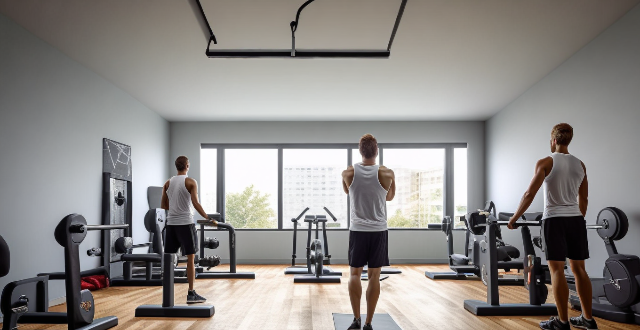
Is it necessary to have a gym membership to experience mental rejuvenation through exercise ?
Exercise is beneficial for mental health, but a gym membership isn't necessary. Benefits include reduced stress and anxiety, improved self-esteem, better sleep quality, and enhanced cognitive function. Gym pros: diverse equipment, group classes, personal training, community support. Cons: cost, time constraints, crowdedness. Alternatives: home workouts, outdoor activities, sports clubs, dance classes. The key is finding an enjoyable activity that can be consistently incorporated into one's lifestyle.

Is it necessary to join a gym or can I do a home workout routine as a woman ?
The decision to join a gym or opt for a home workout routine as a woman depends on personal preferences, fitness goals, time availability, and budget. Advantages of joining a gym include access to equipment, motivation and accountability, and professional guidance. Advantages of home workouts include convenience, cost-effectiveness, and flexibility. Considerations for women include fitness goals, time availability, budget, and personal preferences. Both options can be effective in maintaining fitness levels, so it ultimately comes down to individual circumstances and preferences.

What are some effective cardio exercises that can be done at the gym ?
Effective Cardio Exercises at the Gym Cardio exercises are an essential part of any fitness routine. They help improve cardiovascular health, burn calories, and increase endurance. Here are some effective cardio exercises that can be done at the gym: 1\. Treadmill Workouts 2\. Elliptical Machines 3\. Stationary Bikes 4\. Rowing Machines 5\. Step Mills 6\. VersaClimber/Vertical Climber 7\. Group Fitness Classes 8\. Other Machines

How often should I go to the gym to see results ?
The frequency of gym visits depends on fitness goals, current fitness level, and workout intensity. Factors to consider include: 1. Fitness Goals: - Weight Loss: 3-5 days per week of moderate to high-intensity exercise. - Muscle Building: Strength training 2-3 times per week with rest days. - Endurance Training: Run or cycle 3-4 times per week. - Flexibility/Yoga: Practice daily for best results. 2. Current Fitness Level: - Beginners: Start with 2-3 days per week and gradually increase. - Intermediate: Aim for 3-4 days per week of targeted workouts. - Advanced: Up to 5-6 days per week of specialized training. 3. Intensity of Workouts: - High Intensity: Allow for more recovery time; 2-3 intense sessions per week. - Moderate Intensity: Can be done 3-5 times per week. - Low Intensity: May be done daily, but focus on active recovery. Recommended routines vary depending on the goal, such as cardiovascular exercise and strength training for weight loss, compound exercises for muscle building, long slow distance and interval training for endurance, and daily practice for flexibility and yoga. Tips for success include setting realistic goals, mixing up exercises, listening to your body, and staying consistent. Rest days are important for recovery and growth.

How can I create a effective home gym on a budget ?
Creating a home gym on a budget requires identifying fitness goals, choosing multipurpose equipment, investing in quality mats, incorporating bodyweight exercises, utilizing online resources, and establishing a consistent routine.

Can organic food help with weight loss ?
Organic food may aid weight loss by reducing exposure to harmful chemicals, offering higher nutrient content, having lower calorie density, and improving digestion. Incorporating organic options slowly, choosing locally grown produce, reading labels carefully, planning meals, and including protein sources can support a healthy eating plan conducive to weight loss.

Can fitness trackers help me achieve my weight loss goals ?
Fitness trackers can support weight loss by tracking steps, heart rate, sleep, and calories. They provide motivation, accountability, and data for decision making. However, they have limitations such as overreliance on technology and accuracy concerns. It's important to use them wisely and in conjunction with other healthy habits for effective weight loss.

How much weight should I lift during strength training ?
The amount of weight you should lift during strength training depends on various factors such as your fitness level, goals, and experience. Here are some guidelines to help you determine the appropriate weight for your routine: start with a light weight, increase gradually, choose the right number of repetitions, listen to your body, and consider your goals. Remember to consult with a fitness professional or personal trainer to develop a customized program that meets your specific needs and goals.

Can strength training help with weight loss ?
Strength training, involving the use of resistance to induce muscular contraction and build strength, can significantly contribute to weight loss by increasing metabolic rate, boosting post-exercise oxygen consumption (EPOC), improving body composition, and enhancing appetite control. Incorporating strength training into your routine, starting slowly and focusing on compound movements while staying consistent, can help achieve weight loss goals.

How often do high-profile personalities hit the gym to stay in shape ?
High-profile personalities, including celebrities, athletesHigh-profile personalities, including celebrities, athletes often maintain a rigorous fitness routine The frequency at which they hit the gym can vary depending on their lifestyle, profession, and personal goals. Celebrities may work out multiple times a day or only a few times per week due to busy schedules. Athletes typically have structured training regimens, training several hours a day to maintain peak physical condition. Public figures may incorporate workouts into their daily routines or hire personal trainers. Actors and actresses may work with trainers to develop specific workout plans for roles, while models engage in daily workouts to maintain a lean physique. Musicians may incorporate regular workouts to improve stamina and overall fitness. Personal fitness goals can also influence gym frequency, ranging from improving overall health to achieving specific athletic accomplishments. Consistent fitness routines are crucial for high-profile personalities to stay in shape and perform at their best.

How do I properly warm up before a gym workout ?
A proper warm-up is crucial before starting any gym workout. It helps to prepare your body for the physical demands of exercise, reduces the risk of injury, and improves performance. Here are some steps to follow for a proper warm-up: 1. Start with 5-10 minutes of low-intensity cardiovascular exercise such as walking, jogging, or cycling. 2. Move on to dynamic stretching exercises that involve moving your joints through their full range of motion while gradually increasing intensity. 3. Perform activation exercises that activate specific muscle groups that you will be using during your workout. 4. Spend a few minutes rolling out areas that feel tight or sore with a foam roller. 5. Perform mobility drills that help to improve flexibility, stability, and coordination. 6. Finally, perform a few warm-up sets of the exercises you plan to do in your workout. Remember to listen to your body and adjust the duration and intensity of your warm-up based on how you feel. A proper warm-up should leave you feeling energized and ready to tackle your workout.

What are the best stretches for cooling down after a gym session ?
After a gym session, it's crucial to gradually cool down your body. Here are the best stretches for that: hamstring, quadriceps, calf, hip flexor, and back stretches. These exercises help reduce heart rate, lower blood pressure, prevent muscle soreness, improve flexibility, and range of motion. Remember to hold each stretch for at least 30 seconds and avoid bouncing to prevent injury.

Can yoga help with weight loss ?
Yoga can be a valuable addition to a weight loss program due to its ability to improve muscle tone, increase flexibility, reduce stress levels, and promote mindful eating habits. Incorporating yoga into your routine along with other forms of exercise and healthy lifestyle habits can help you achieve your weight loss goals and improve overall health and well-being.

What are some healthy dinner recipes for weight loss ?
The text provides a list of eight healthy dinner recipes that can aid in weight loss. These recipes include grilled chicken with steamed vegetables, quinoa salad with roasted veggies, salmon with asparagus, lentil soup, turkey chili, stuffed bell peppers, cauliflower rice stir fry, and zucchini noodles with pesto sauce. The text emphasizes the importance of eating a balanced meal before bedtime to maintain a healthy weight and ensure the body gets necessary nutrients for optimal functioning.

Can running help me lose weight quickly ?
Running is a popular form of exercise that can help you lose weight quickly, but it's important to understand the factors that contribute to weight loss and how running fits into the equation. In this response, we'll explore the benefits of running for weight loss and provide tips on how to maximize your results. Benefits of Running for Weight Loss: 1. Burns Calories: Running is a high-intensity cardio workout that burns a significant number of calories per minute. The more calories you burn during exercise, the easier it is to create a calorie deficit, which is necessary for weight loss. 2. Increases Metabolism: Running can boost your metabolism, allowing you to burn more calories even when you're not exercising. This increased metabolic rate can lead to faster weight loss over time. 3. Builds Muscle: Running helps build lean muscle mass in your legs, glutes, and core. Muscle tissue burns more calories at rest than fat tissue, so having more muscle can contribute to faster weight loss. Tips for Maximizing Weight Loss with Running: 1. Set Realistic Goals: Aim for a healthy rate of weight loss, such as 1-2 pounds per week. Rapid weight loss can be harmful and difficult to maintain in the long term. 2. Combine Cardio and Strength Training: Incorporate strength training exercises into your routine to build muscle and increase your overall calorie burn. Focus on compound movements like squats, lunges, and deadlifts to target multiple muscle groups at once. 3. Stay Consistent: Make running a regular part of your routine, aiming for at least 3-4 sessions per week. Consistency is key to achieving long-term weight loss goals. 4. Watch Your Diet: Pay attention to what you eat and try to consume a balanced diet rich in whole foods, lean proteins, and healthy fats. Avoid processed foods, sugary drinks, and excessive amounts of alcohol, which can hinder weight loss efforts. 5. Rest and Recovery: Allow your body time to rest and recover between running sessions to prevent injury and avoid burnout. Incorporate stretching and foam rolling into your routine to aid recovery and improve flexibility. Conclusion: While running can be an effective way to lose weight quickly, it's important to approach your fitness journey with patience and realistic expectations. By combining running with strength training, watching your diet, and staying consistent with your workouts, you can maximize your weight loss results and achieve a healthier lifestyle.

How does weight influence a woman's fertility ?
Fertility can be affected by weight, with both underweight and overweight conditions presenting challenges. Underweight may lead to hormonal imbalances, disrupting ovulation and menstrual regularity, while overweight or obese women might face issues like PCOS, endocrine disruptions, and inflammation. Maintaining a healthy weight is crucial for optimal fertility, supporting regular ovulatory cycles, improved hormonal balance, and better pregnancy outcomes. Tips for managing weight include consulting healthcare professionals, following a balanced diet, exercising regularly, managing stress, avoiding crash diets, and monitoring menstrual cycles.